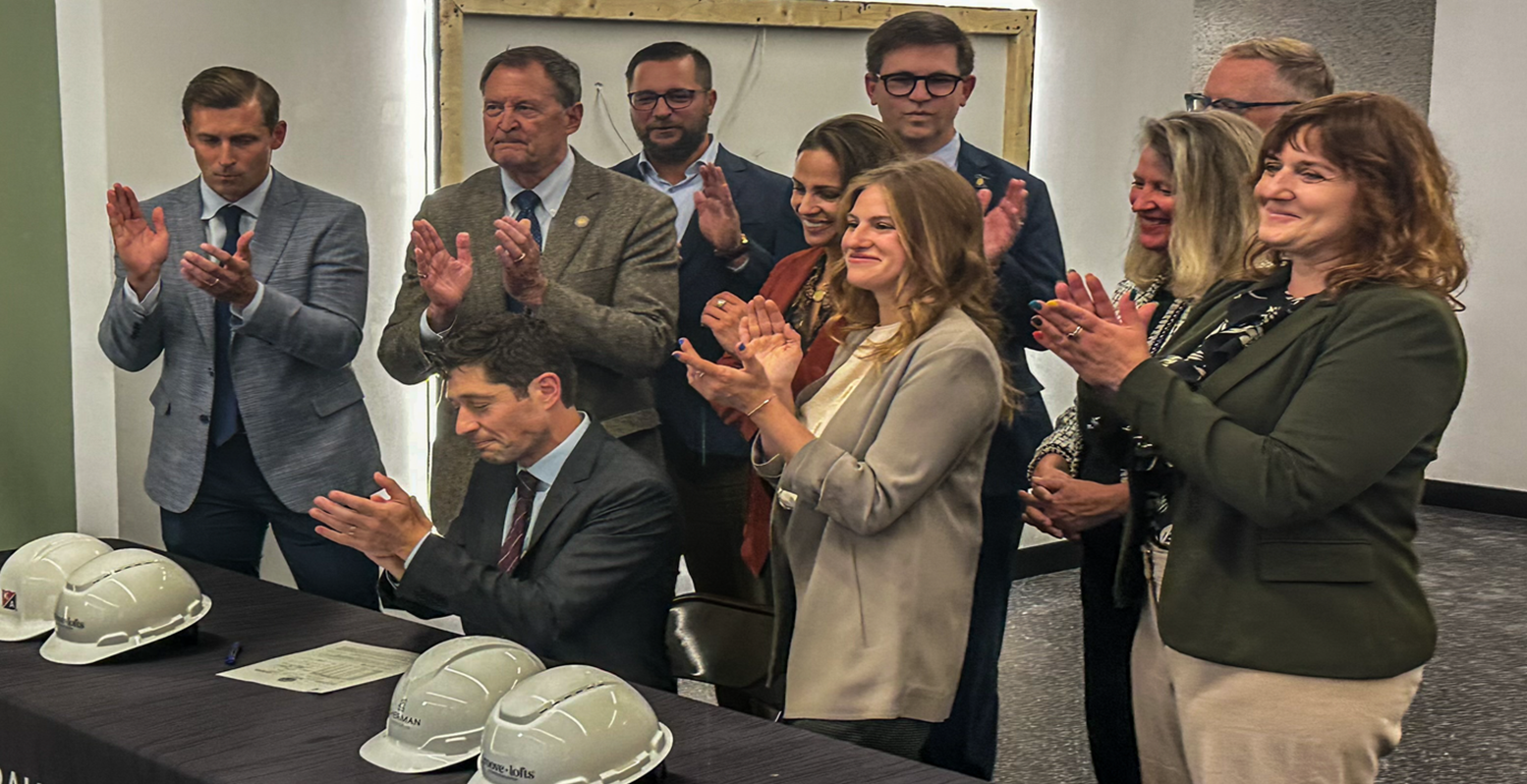Mayor Jacob Frey signed into law on Sept. 24, 2024, an ordinance that makes it easier to convert unused commercial space into residential units. Like many cities across the U.S., remote work and other trends since the COVID-19 pandemic have left some office buildings and nonresidential properties empty while the need for housing continues to grow.
Authored by Council Member Michael Rainville and co-authored by Council Member Katie Cashman, Ordinance 2024-00705 aims to create more housing while stimulating the economy and increasing foot traffic in the city’s commercial districts. The ordinance is designed to expedite the approval process for conversion projects and reduce the administrative demand on builders.
“Downtown Minneapolis is experiencing a nation-leading resurgence, but it's clear that the way people work has changed since the pandemic,” said Mayor Frey. “This ordinance reflects our adaptability as a City. By converting underused office space into homes, we’re addressing the growing demand for housing while ensuring our downtown remains vibrant. This is about smart growth—we’re bringing more residents to our city’s downtown core, which will in turn support our local businesses, events, and the overall economy.”
Commercial to Residential
The push to convert commercial to residential units is part of Mayor Frey’s Vibrant Downtown Storefronts Workgroup, which he convened in late 2022. The group brought together Council Members, business, community, and philanthropic leaders to find ways to reinvent and revitalize the downtown corridor. Part of the group’s recommendations included supporting conversions of vacant office buildings to residential uses and streamlining the process for tenant buildouts.
“This is just one of many initiatives we’re working on to bring more vibrancy to downtown," said Erik Hansen, the City’s Director of Community Planning and Economic Development. "Converting office space into housing helps address the housing shortage while revitalizing the urban core for residents and businesses alike."
“This ordinance will streamline the process for converting empty office and commercial space into much needed housing,” said Council Member Michael Rainville. “Creating a broad spectrum of housing options downtown will add to the vitality and vibrancy where we currently have vacancy.”
Doubling Down
“I’m excited about doubling our downtown residential population in the coming years, and to do so we need to create more housing with some of these vacant commercial buildings. It’s a win-win,” said Council Member Katie Cashman. “We know these projects can come with significant costs and logistical challenges, so as a policy maker it’s my job to make it easier and faster to pursue and complete these kinds of projects.”
The ordinance streamlines the conversion process by reducing zoning barriers through three code changes:
- Site plan review—All nonresidential-to-residential conversions will now be subject to administrative review instead of Planning Commission approval, reducing review time by up to two months and eliminating the need for public hearings.
- Travel demand management (TDM)—Adaptive reuse projects will only require a minor TDM plan, regardless of the number of new residential units. This replaces a more extensive process that included a traffic study.
- Inclusionary Zoning (IZ)—The requirement for affordable units in conversions of 50 or more units will be paused for five years, though projects seeking public financial assistance will still have affordability requirements.
The conversion of underused commercial space into housing is already underway. Developer Sherman Associates is transforming the Northstar Center, a 13-story office building in the heart of downtown, into 216 new residential units, a fourth of which will be affordable to renters earning 50% of less of the area’s median income. The $92 million project—the Groove Lofts at Northstar Center—is being supported by $6.9 million in tax increment financing from the City, as well as state and federal tax credits. The first tenants are expected to move in next month.
Positive Impact
“Today marks a step forward in preserving history, revitalizing buildings, and fostering sustainable development for the City of Minneapolis,” said Chris Sherman, President of Sherman Associates. “This ordinance will have a positive impact on development in the City, in supporting the delivery of more housing where it is needed. With a 40-year history of converting commercial buildings into housing, Sherman Associates is honored to have Mayor Frey, Council Member Rainville and Council Member Cashman announce the Commercial-to-Residential-Conversion Ordinance from our newest residential conversion project called Groove Lofts at Northstar Center, opening in October and delivering 216 high-quality homes to downtown Minneapolis.”
Other City efforts to capitalize on unused commercial space include the Arts & Culture Vibrant Storefronts Initiative, a program that provides funding to subsidize rent for artists and arts organizations in vacant storefronts across downtown and Uptown. The goal of the initiative is to support creative opportunities and increase vibrancy, innovation, and sustainability across the city.


